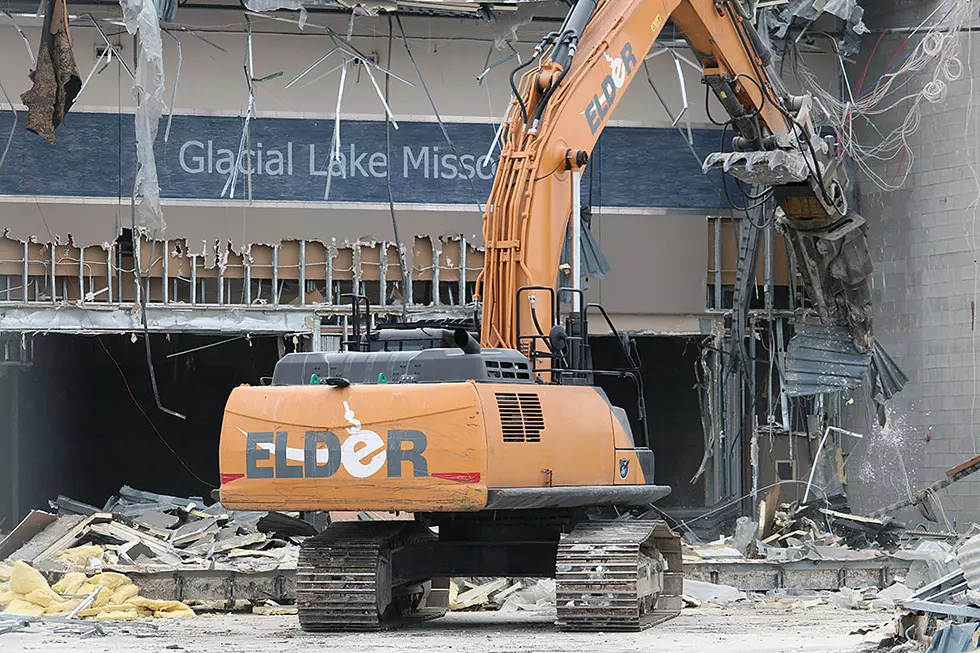
Missoula airport considers sustainability, wages as terminal project advances
As the Missoula International Airport pushes forward with the first phase of its new passenger terminal, it's also taking a deeper look at sustainability, and airport officials admit the facility has room to improve.
Rita Harris-Powers, the airport's accounting clerk, recently completed her master's thesis from Harvard University with a focus on airport operations and ways the facility could apply sustainable practices as it moves into the future.
“The airport is a pretty large beacon in the community, and we have a unique opportunity to lead by example here,” she said. “If we chose to do nothing, then we'll leave the organization vulnerable to environmental regulations in the future, increased costs of operations, continued employment issues and decreasing support from the community.”
In 2019, as the airport embarked on Phase 1 of its new terminal, it also set a record for passengers, topping 907,000 people for the first time. Higher passenger counts have placed a greater demand on the airport's services, and the resources it consumes.
Among the challenges, Harris-Powers said, recycled materials are filling the airport's garbage bins, leading to additional garbage fees. She encouraged the Airport Authority to consider an enhanced contract with Republic Services, including more frequent collection and added recycling bins.
“It will cost us more, but it's going to be less than what those overage fees have cost us over the last couple of years,” she said. “There will be a cost savings there, and we'd reduce the amount of recyclable material that ends up in the landfill.”
While most initiatives would cost money, they could net long-term savings and position the airport as a community leader in sustainable practices.
Simple things could include rainwater collection and native planting. The airport should conduct an inventory of all light bulbs as it transitions to LEDs, and it should be installing low-flow water fixtures, which could reduce consumption between 20% to 87%.
Harris-Powers has also encouraged the airport's board to consider electrifying its vehicle fleet using FAA grants to improve air quality, and she urged the airport to consider installing a solar array.
“I know it has come up before and generally stops at a lack of funding, but you could look at some alternative funding sources,” she told the board at a recent meeting. “You could look at partnering with our tenants, since they do share in the cost of that utility. You could also look at a power purchase agreement with a private investor.”
A 9,000 square foot solar array would help reduce the airport's electricity consumption by 8% percent, which Harris-Powers said would net an annual savings of $26,000 a year. A ground mounted array would cost around $135,000 while a carport array would cost roughly $166,00.
The cost of the later could be offset by charging a premium for shaded airport parking.
“Going to Oregon, we saw two examples there, one in Redmond with its rooftop array, and in Medford, where they had a premium parking solar array,” said airport director Cris Jensen. “We do know airports are certainly looking at this and some are well ahead of us.”
While airport wages fall outside the scope of sustainability, they too could position the airport as a community leader while potentially saving the facility money down the road.
The airport authority currently hires its base employees at $10.05 an hour. While that's above Montana's minimum wage, it's doesn't meet what's deemed a living wage in Missoula.
“The Massachusetts institute of technology has a living wage calculator where they take into account things like housing, health care, child care and food costs for different counties throughout the U.S.,” said Harris-Powers. “For 2019, they calculated a living wage for a Missoula resident would be $11.93 an hour.”
The airport spends around $900 training each new ground handler. Between January 2018 and September 2019, Harris-Powers said, the airport hired 20 new ground handlers at a training cost of around $18,000.
To increase retention and cut back on turnover, she recommended an airport-wide minimum wage of $12.17 for 2020. That would cost the airport around $24,000 in the first year, which represents just 0.6% of total wages paid by the Airport Authority over the course of a year.
“The airport authority should adopt this starting wage rate to lead by example and invite and encourage other airport employers to participate as well,” she said.
“The main department that would be effected by this is ground handling, since they represent 40% of our employees here at the Airport Authority. Hopefully, retention would increase and turnover would decrease to offset some of those other costs.”
